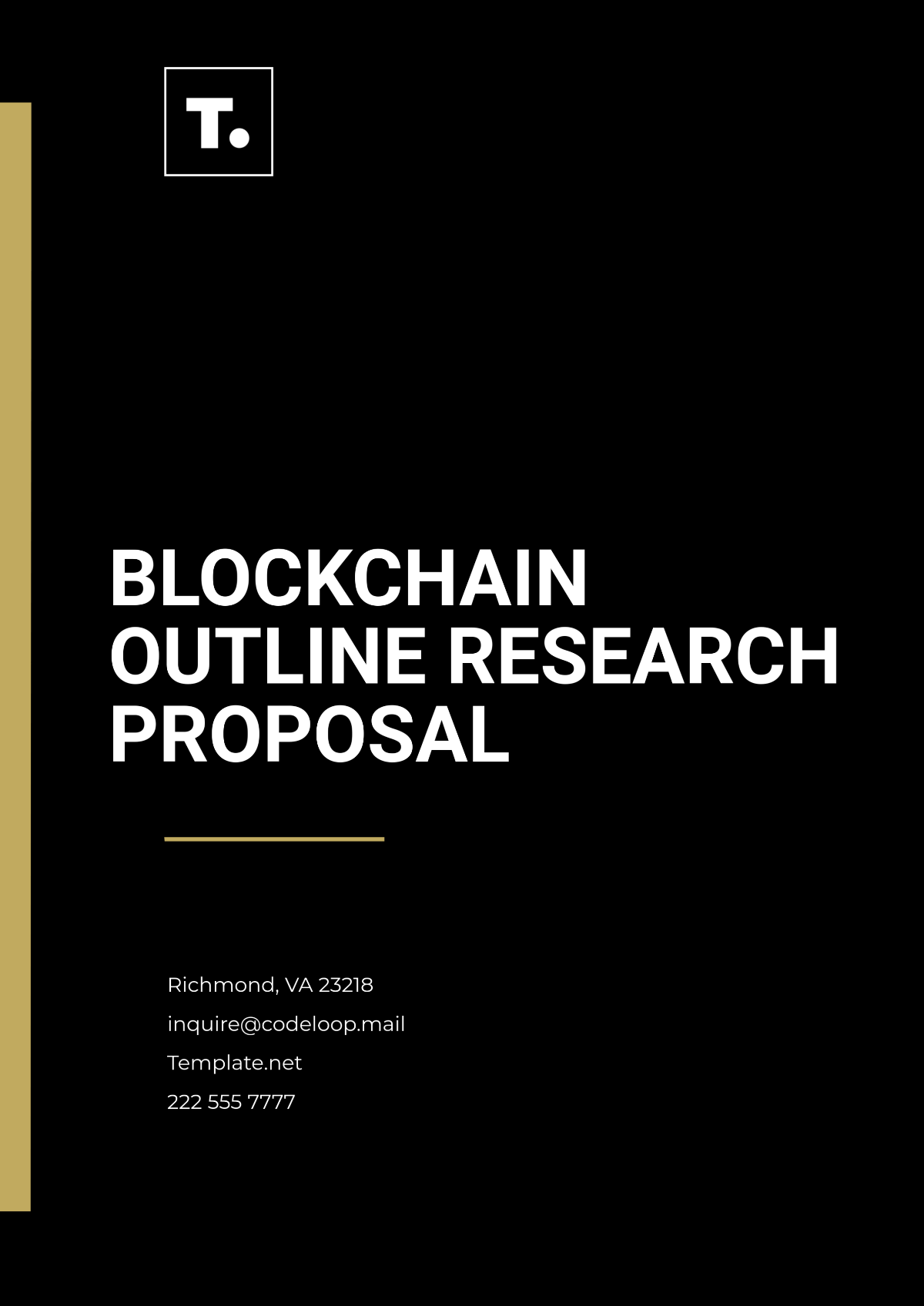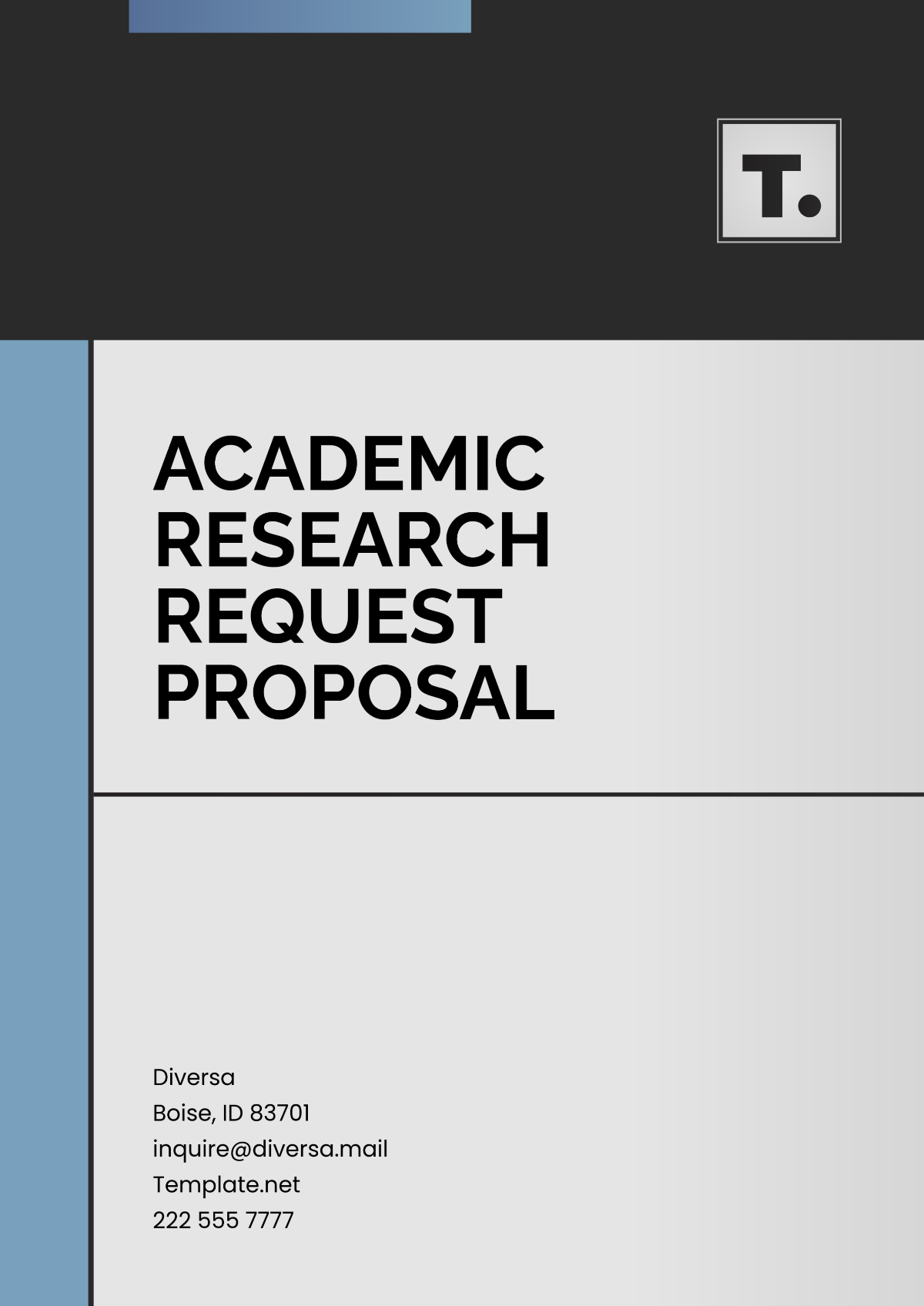Climate Change Project Proposal
I. Executive Summary
Climate change represents one of the greatest global challenges of the 21st century, threatening ecosystems, economies, and communities worldwide. The impacts of climate change are already being felt in the form of rising sea levels, extreme weather events, droughts, and disrupted agricultural systems. In response to this growing crisis, [Your Company Name] is proposing a comprehensive, multi-faceted climate change mitigation and adaptation project. This initiative aims to address the root causes of climate change while also preparing vulnerable communities for its unavoidable consequences.
Our project will focus on reducing greenhouse gas emissions, promoting the adoption of renewable energy technologies, and building climate resilience in high-risk regions. Through a combination of solar, wind, and energy efficiency programs, alongside large-scale reforestation efforts, we plan to reduce carbon emissions by at least [50%] by the year 2055. This project will also engage local communities in sustainable practices, empowering them with the tools and knowledge to thrive in the face of climate challenges.
The project is expected to be a long-term effort, spanning from [2050] to [2060], with initial implementation phases focused on research, planning, and pilot projects. The total budget for the project is estimated at $[5,000,000], which will cover all aspects of implementation, including infrastructure, community outreach, policy advocacy, and monitoring and evaluation. By the end of the project, we anticipate measurable reductions in carbon emissions, a significant increase in renewable energy capacity, and greater resilience for the most vulnerable communities.
II. Objectives
A. Primary Objectives
The primary objectives of this climate change project are centered around reducing greenhouse gas emissions, increasing the adoption of sustainable energy solutions, and enhancing the resilience of communities. These objectives align with the overarching goal of mitigating the adverse effects of climate change while promoting sustainable development and social equity.
Mitigate Carbon Emissions:
The project aims to reduce greenhouse gas emissions in key sectors such as energy, transportation, and agriculture by at least [50%] by 2055. This will be achieved through a combination of renewable energy deployment, energy efficiency measures, and sustainable agricultural practices.
By focusing on transitioning industries to clean energy solutions and improving energy efficiency, the project will significantly contribute to global emission reduction targets outlined in the Paris Agreement.
We will work closely with governments, businesses, and local communities to create policies and incentives that support this transition, ensuring that the shift to a low-carbon economy is equitable and just.
Enhance Resilience to Climate Change:
The project aims to enhance the resilience of vulnerable populations, particularly those in regions most affected by climate impacts such as coastal areas and drought-prone regions. This will involve equipping [10,000] households with climate-resilient infrastructure and providing training on disaster preparedness and climate adaptation strategies.
Additionally, the establishment of [50] urban green spaces will serve as critical cooling zones in cities, mitigating the urban heat island effect and providing a safe environment for residents during heatwaves. These green zones will be designed to improve both environmental and social outcomes, offering spaces for recreation, community engagement, and biodiversity conservation.
We will also focus on enhancing the resilience of small-scale farmers, who are often at the mercy of erratic weather patterns. Training programs will equip them with the knowledge and tools to adapt to changing climates while increasing agricultural productivity in a sustainable manner.
Promote Sustainable Practices:
Promoting sustainable practices is essential to shifting the mindset of individuals, businesses, and governments toward climate action. The project will collaborate with [100] local businesses to help them transition to circular economy practices that reduce waste, increase resource efficiency, and promote sustainable product life cycles.
Public awareness campaigns and educational programs will reach over [1,000,000] individuals across various regions, with a particular focus on educating youth and vulnerable communities. Through workshops, seminars, and online resources, individuals will be empowered to make informed decisions about their consumption habits, energy usage, and waste management practices.
By fostering a culture of sustainability, the project will contribute to long-term behavior change and create a ripple effect that extends beyond the project’s immediate reach.
B. Secondary Objectives
Advocate for Policy Changes:
The project will actively engage with policymakers to advocate for stronger climate policies at the local, national, and international levels. By working closely with government bodies, we aim to secure commitments to renewable energy adoption, carbon pricing, and increased investment in climate resilience.
A key aspect of this advocacy will involve ensuring that marginalized communities, particularly those living in poverty, are included in policy decisions. This will help ensure that climate action is both effective and equitable, with no one left behind.
Strengthen Global Partnerships:
Recognizing the global nature of the climate crisis, the project will seek to build partnerships with [50] international organizations, NGOs, and climate research institutes. These collaborations will help to share knowledge, resources, and best practices, ensuring that our approach is aligned with global climate goals and that our impact is maximized.
By leveraging international expertise, we can implement innovative solutions and scale successful projects more quickly, accelerating the global transition to a sustainable future.
III. Project Scope
A. Target Areas
The project will focus on regions that are most vulnerable to the effects of climate change, including coastal areas at risk of sea-level rise, agricultural communities facing water scarcity, and urban centers experiencing increased temperatures and extreme weather events. The geographic scope of the project will encompass both urban and rural communities in Europe and Asia.
Geographical Coverage:
The initial phase of the project will focus on high-risk areas, particularly coastal regions in Myanmar, where rising sea levels and increased frequency of storms are expected to have devastating impacts by 2050. In these areas, the project will prioritize flood protection infrastructure, such as seawalls, and invest in renewable energy solutions to reduce reliance on fossil fuels.
Rural areas that are heavily dependent on agriculture will also be a focal point. By working with farmers to adopt climate-smart agricultural practices, we aim to increase food security, improve soil health, and reduce carbon emissions from farming activities.
In urban centers, we will address the urban heat island effect by creating green spaces and promoting energy-efficient buildings. These efforts will be particularly beneficial in cities where temperatures are expected to rise by [3-5°C] by 2050.
Target Demographics:
Vulnerable populations, including low-income households, indigenous communities, and women, will be prioritized in all phases of the project. These groups often face the greatest exposure to climate risks and have fewer resources to cope with the impacts of climate change.
Small and medium-sized enterprises (SMEs) will also be a key target, as they often lack the capacity to invest in sustainable technologies and practices. By providing training, financial incentives, and access to renewable energy solutions, we can help SMEs reduce their environmental impact while improving their long-term financial stability.
IV. Project Activities
A. Renewable Energy Initiatives
Solar Energy Deployment:
One of the key components of the project will be the installation of [5,000] solar panels in underserved areas, which will directly benefit approximately [25,000] individuals. Solar energy has the potential to provide clean, affordable electricity, particularly in areas where traditional energy infrastructure is lacking.
In addition to installing solar panels, the project will work to build local capacity for solar panel maintenance and repair, creating jobs and skills in the renewable energy sector.
Subsidies will be provided to residential and commercial property owners to make solar energy more accessible and affordable. A key part of this initiative will be providing financing options that allow property owners to pay for solar installations over time.
Wind Energy Projects:
Wind energy will be another key focus of the project, with plans to develop [3] wind farms that will collectively generate [100 MW] of electricity by 2060. These wind farms will serve both local communities and regional electricity grids, providing clean power and helping to offset the use of fossil fuels.
Wind projects will be strategically located in areas with consistent wind patterns, ensuring optimal performance and minimal environmental disruption. These projects will also include local community consultations to ensure that they meet the needs and concerns of those living nearby.
Energy Efficiency Programs:
Energy efficiency is a critical component of reducing overall carbon emissions. The project will distribute energy-efficient appliances, such as LED bulbs, refrigerators, and air conditioners, to [50,000] households. These appliances will help families reduce their energy consumption and lower utility costs.
In addition, energy audits will be conducted for [200] SMEs to identify opportunities for energy savings. Recommendations will focus on improving insulation, lighting, heating and cooling systems, and industrial processes to reduce energy use.
B. Reforestation and Afforestation
Urban Green Zones:
Establishing urban green spaces is vital for mitigating the effects of climate change in cities. The project will create [50] parks and green spaces in urban areas, focusing on regions with limited access to nature. These green zones will not only help to lower temperatures but will also improve air quality, provide habitats for local wildlife, and offer spaces for community interaction.
These parks will incorporate native plant species that are well-suited to local conditions, promoting biodiversity and reducing the need for water and fertilizers.
Reforestation in Degraded Lands:
Reforestation will take place in degraded lands that have lost their natural vegetation due to deforestation or other human activities. By planting [500,000 acres] of trees, the project will help to restore critical ecosystems and increase the land's capacity to sequester carbon.
The reforestation efforts will focus on native species that provide both environmental and social benefits. Local communities will be involved in the planting process, ensuring that the project is inclusive and sustainable.
V. Budget Breakdown
Category | Amount ($) | Percentage |
|---|---|---|
Renewable Energy Initiatives | 2,000,000 | 40% |
Reforestation Projects | 1,200,000 | 24% |
Community Training Programs | 800,000 | 16% |
Policy Advocacy | 500,000 | 10% |
Monitoring and Evaluation | 300,000 | 6% |
Contingency Fund | 200,000 | 4% |
Total | 5,000,000 | 100% |
The budget allocation ensures that each aspect of the project receives adequate funding to achieve its goals. The largest portion of the budget will go toward renewable energy initiatives, followed by reforestation projects. This reflects the priority we place on transitioning to a clean energy economy while simultaneously restoring ecosystems that will help to mitigate the impacts of climate change.
VI. Implementation Timeline
Phase | Activities | Duration | Completion Year |
|---|---|---|---|
Phase I: Planning | Feasibility studies and stakeholder consultations | 12 months | 2051 |
Phase II: Pilot Projects | Initial deployment of renewable energy and reforestation | 24 months | 2053 |
Phase III: Expansion | Scaling successful models to additional regions | 36 months | 2056 |
Phase IV: Evaluation | Monitoring and reporting on outcomes | 12 months | 2057 |
The project is designed to be implemented in distinct phases, with careful planning, execution, and evaluation at each stage. The planning phase will include feasibility studies to ensure that the proposed interventions are viable in each targeted region. During the pilot phase, we will implement small-scale versions of the renewable energy and reforestation initiatives, allowing for adjustments before scaling. The expansion phase will roll out successful pilot programs to other regions, and the final evaluation phase will assess the overall impact of the project.
VII. Expected Outcomes
A. Environmental Impact
By the end of the project in 2055, we expect to reduce carbon emissions by [500,000 metric tons] annually. This will be achieved through the deployment of renewable energy solutions, energy efficiency measures, and large-scale reforestation efforts. These reductions will contribute to global climate goals and help mitigate the impacts of climate change.
The establishment of urban green spaces and reforestation projects will increase green cover by [15%] in urban areas, improving biodiversity and reducing the urban heat island effect. This will lead to cooler temperatures, better air quality, and a more resilient urban environment.
B. Social Impact
The project will enhance the resilience of [10,000] households in disaster-prone regions by providing access to climate-resilient infrastructure and disaster preparedness training. These communities will be better equipped to respond to climate-related hazards, reducing the vulnerability of individuals and families.
Awareness campaigns and training programs will educate over [1,000,000] individuals on climate change mitigation and adaptation strategies. This will create a ripple effect, empowering communities to adopt sustainable practices and advocate for climate action at the local level.
C. Economic Impact
The project will create [10,000] green jobs in sectors such as renewable energy, reforestation, and sustainable agriculture. These jobs will not only contribute to economic growth but will also provide long-term employment opportunities for local communities.
Businesses that adopt energy-efficient technologies and sustainable practices will save an estimated $[50,000,000] by 2060, helping them reduce operating costs while contributing to a low-carbon economy.
VIII. Risk Management
Effective risk management is a cornerstone of any large-scale project, especially one aimed at addressing an issue as complex and pervasive as climate change. [Your Company Name] recognizes that while our proposed project has the potential for substantial environmental, social, and economic benefits, it is also subject to a range of risks. These risks could emerge from a variety of factors, including political, financial, social, and environmental challenges. Therefore, a detailed and proactive risk management strategy is essential to the success of this initiative. Below, we outline the key risks, their potential impact, and the corresponding mitigation strategies to minimize or address these risks.
A. Identified Risks
Resistance to Change from Communities
Risk:
One of the primary challenges in any climate change project is overcoming resistance from local communities, particularly those who are unfamiliar with or skeptical of climate change initiatives. This resistance can manifest in the form of reluctance to adopt new technologies, new practices, or even participation in proposed interventions. Such resistance could delay the project's progress and hinder its long-term success.
Potential Impact:
Delays in project implementation and community disengagement could reduce the overall impact of the project. Without widespread adoption of renewable energy solutions, energy-efficient technologies, or sustainable agricultural practices, the project's ability to achieve its environmental goals would be undermined.
Mitigation Strategy:
To address this risk, the project will place a strong emphasis on community engagement and education. Awareness campaigns, local consultations, and participatory decision-making processes will be integral to building trust within the communities. Engaging local leaders, providing incentives for early adopters, and highlighting the long-term benefits of the project will encourage wider participation. Additionally, targeted training programs will help communities understand the advantages of the proposed changes, ensuring that they feel empowered and capable of adopting the new practices.Delays in Project Implementation
Risk:
Large-scale projects like this one often face delays due to logistical challenges, lack of coordination among stakeholders, or unforeseen obstacles such as supply chain disruptions. Delays could extend the project's timeline and increase costs, potentially diminishing the impact within the target timeframes.
Potential Impact:
A delay in project implementation may result in missed opportunities for emissions reductions, energy savings, and community empowerment. Extended timelines could also affect the project's funding, as delays may lead to budget overruns and the need for additional resources.
Mitigation Strategy:
To minimize the risk of delays, [Your Company Name] will establish a detailed project schedule with clear milestones and deadlines. A project management team will be responsible for monitoring progress and coordinating activities across different phases of the project. Additionally, buffer periods will be included in the timeline to account for any unexpected issues. We will also ensure that all suppliers and contractors are held to strict performance standards, with penalties for delays, to encourage on-time delivery of goods and services.Policy and Regulatory Barriers
Risk:
Government policies and regulations can either facilitate or hinder the success of a climate change project. Changes in government leadership, policy priorities, or regulations related to renewable energy, carbon pricing, land use, or waste management could affect the feasibility of proposed interventions. For example, a government may introduce new regulations that limit renewable energy deployment or impose restrictions on reforestation activities.
Potential Impact:
Policy shifts could lead to additional costs or delays in obtaining necessary permits or approvals. They could also restrict the scale of renewable energy projects or limit the scope of reforestation efforts, directly impacting the project's ability to meet its goals.
Mitigation Strategy:
To mitigate this risk, the project will actively engage with policymakers and government agencies at the local, national, and international levels. Early consultation with relevant stakeholders will help to identify potential policy barriers and advocate for necessary changes. By building strong relationships with policymakers, we will work to ensure that climate-friendly policies are in place, creating an enabling environment for the project. We will also regularly monitor regulatory developments and be prepared to adjust the project’s approach to align with any changes in the policy landscape.Funding and Financial Challenges
Risk:
While the initial budget has been carefully estimated, there is always the risk of financial challenges that could impede the progress of the project. These challenges could stem from insufficient funding, changes in donor priorities, economic downturns, or currency fluctuations.
Potential Impact:
A lack of funding could result in the suspension or scaling back of certain project activities, particularly those that require significant upfront investment, such as renewable energy infrastructure and reforestation efforts. This would undermine the long-term sustainability of the project and reduce its impact.
Mitigation Strategy:
To address financial risks, [Your Company Name] will develop a diverse funding strategy that includes grants, public-private partnerships, and crowdfunding. We will also seek to establish a reserve fund to ensure financial stability in the event of unforeseen challenges. Additionally, regular financial audits and transparent reporting will ensure that all project expenditures are carefully monitored and managed, with funds allocated to the highest-priority activities. We will also explore innovative financing mechanisms, such as green bonds or climate impact bonds, to attract private investment for the project.Environmental Changes and Natural Disasters
Risk:
The climate change project itself may be affected by environmental factors, such as unforeseen shifts in weather patterns, extreme climate events, or natural disasters that could disrupt operations. For example, storms, floods, or droughts could damage infrastructure or disrupt community engagement efforts.
Potential Impact:
Natural disasters or extreme weather events could delay construction, reforestation, or energy deployment activities, leading to increased costs and extended timelines. They could also pose direct risks to the communities being served, potentially displacing people or destroying infrastructure.
Mitigation Strategy:
To mitigate these risks, the project will incorporate climate resilience into its design and implementation. For instance, renewable energy infrastructure will be built to withstand extreme weather events, and reforestation efforts will focus on resilient species. In areas particularly prone to disasters, such as coastal or flood-prone regions, we will invest in disaster preparedness and climate-resilient infrastructure. Additionally, risk assessments and contingency plans will be developed for each phase of the project, ensuring that we can quickly respond to any disruptions caused by environmental factors.
IX. Monitoring and Evaluation
Monitoring and evaluation (M&E) are crucial to ensuring the success of any project. This process allows us to track progress, measure results, and make adjustments as needed. [Your Company Name] is committed to maintaining high standards of transparency and accountability throughout the project. The monitoring and evaluation framework outlined below will be used to assess the effectiveness of the project and ensure that it meets its objectives.
A. Key Performance Indicators (KPIs)
The following KPIs will be used to measure the success of the project in key areas:
Carbon Emission Reductions:
Indicator: Reduction in greenhouse gas emissions in metric tons.
Target: Achieve a reduction of [500,000 metric tons] annually by 2055.
Method of Measurement: Emissions will be tracked using satellite-based monitoring systems, as well as local monitoring stations that measure air quality and carbon content in the atmosphere.Renewable Energy Capacity:
Indicator: Total megawatts (MW) of renewable energy capacity installed, including solar, wind, and other clean technologies.
Target: Install [100 MW] of renewable energy capacity by 2056.
Method of Measurement: The amount of electricity generated by newly installed renewable energy systems will be measured using smart meters and grid data.Reforestation Success:
Indicator: Acres of land successfully reforested and survival rates of planted trees.
Target: Reforest [500,000 acres] by 2060, with at least [80%] tree survival rates.
Method of Measurement: Tree survival rates will be monitored through field surveys and satellite imagery. Carbon sequestration will also be estimated using established models for tree growth.Community Engagement:
Indicator: Number of community members trained and participating in climate adaptation and mitigation activities.
Target: Engage [1,000,000] individuals through educational programs, community meetings, and workshops by 2055.
Method of Measurement: Participation rates will be tracked through registration logs, surveys, and feedback from participants.
B. Monitoring Mechanisms
Satellite Imagery and Remote Sensing:
Satellite imagery will be used to track changes in land use, monitor reforestation progress, and assess the impact of climate interventions. Remote sensing will also provide valuable data on the health of vegetation, land degradation, and changes in environmental conditions, helping to refine the project's approach over time.Field Surveys and Ground-Based Data Collection:
Ground-based monitoring will be carried out through regular surveys and assessments. This will include monitoring energy usage reductions, agricultural practices, tree planting success rates, and the condition of climate-resilient infrastructure. Surveys will also capture feedback from local communities to assess their satisfaction with the project and its impact on their daily lives.Quarterly Reports and Reviews:
The project will conduct quarterly reviews to assess progress and identify any challenges or deviations from the plan. These reviews will involve key stakeholders, including project staff, community representatives, and external evaluators. Quarterly reports will be made publicly available to ensure transparency and accountability.
X. Conclusion
The fight against climate change requires ambitious, coordinated, and sustained efforts. [Your Company Name] is committed to addressing this global crisis through a comprehensive, evidence-based approach that includes both mitigation and adaptation strategies. Our project seeks to make a significant contribution to reducing greenhouse gas emissions, promoting sustainable energy, and enhancing climate resilience in vulnerable communities.
Through careful planning, effective risk management, and rigorous monitoring and evaluation, we are confident that this project will achieve its goals and set a precedent for future climate action. By working collaboratively with governments, communities, and other stakeholders, we can ensure that this initiative delivers lasting benefits for the environment and society.
We look forward to the opportunity to partner with organizations, governments, and individuals who share our commitment to creating a more sustainable and equitable world. For more information or to get involved, please contact:
[Your Name]
[Your Company Email]
[Your Company Number]

















































